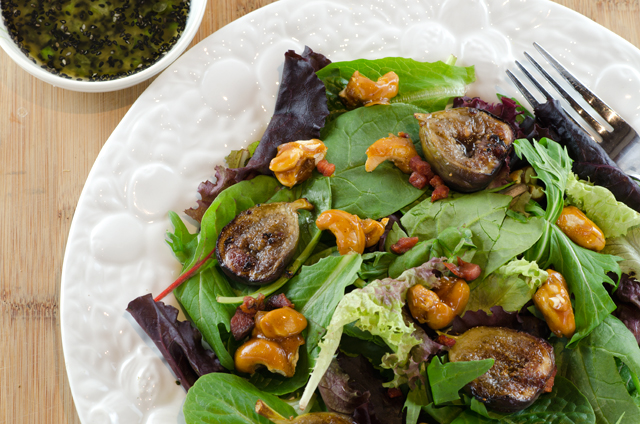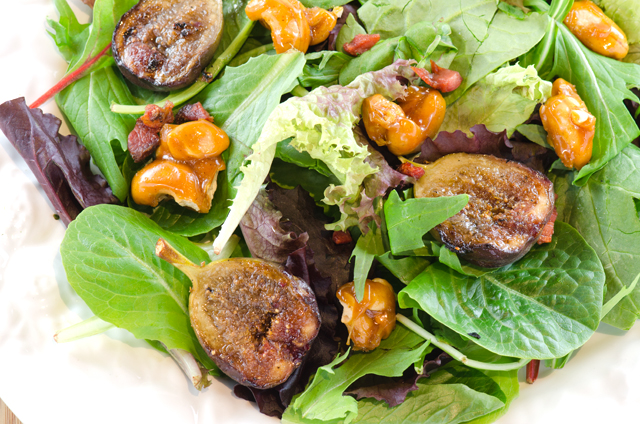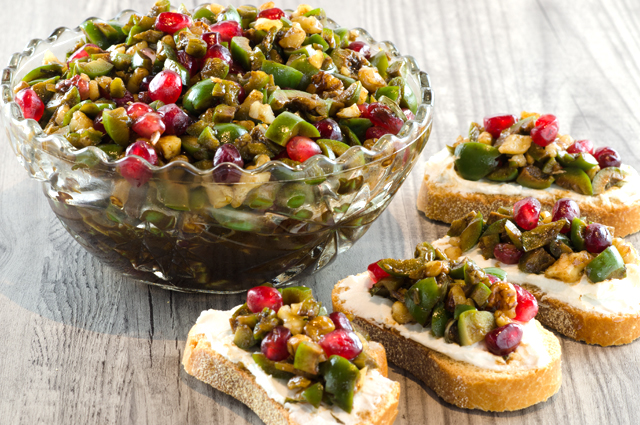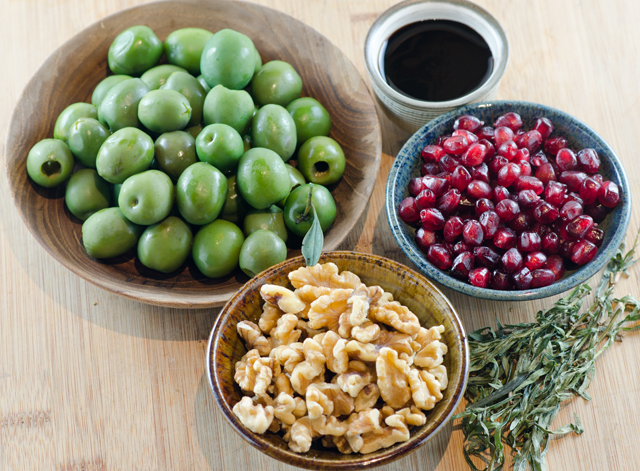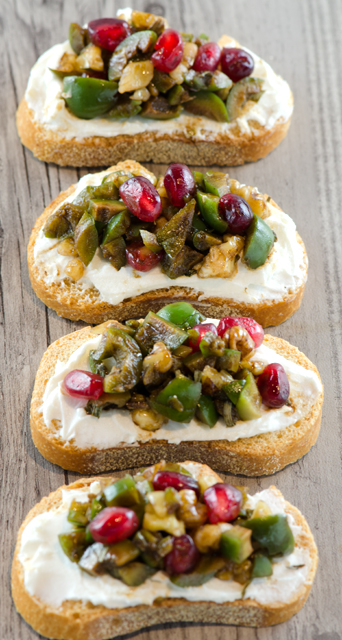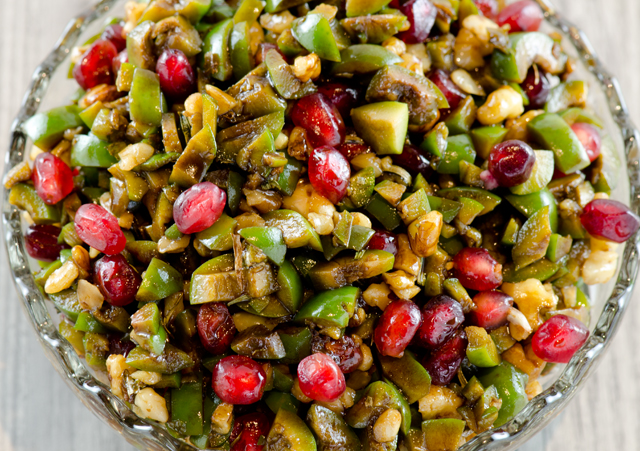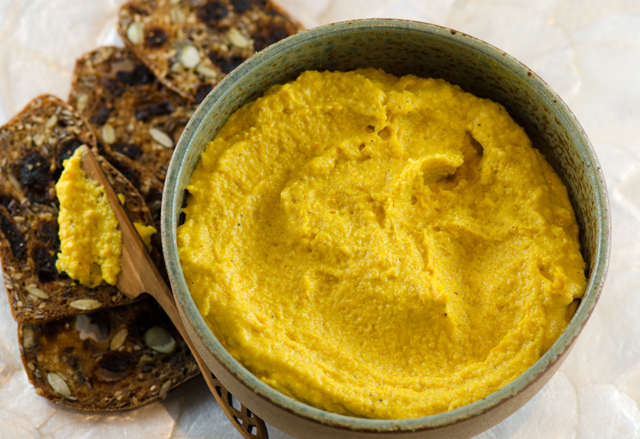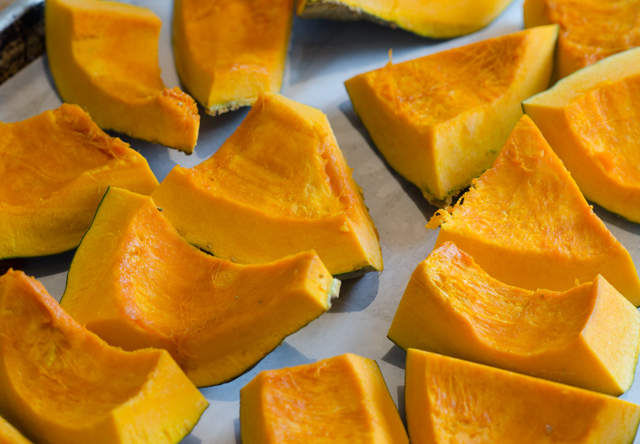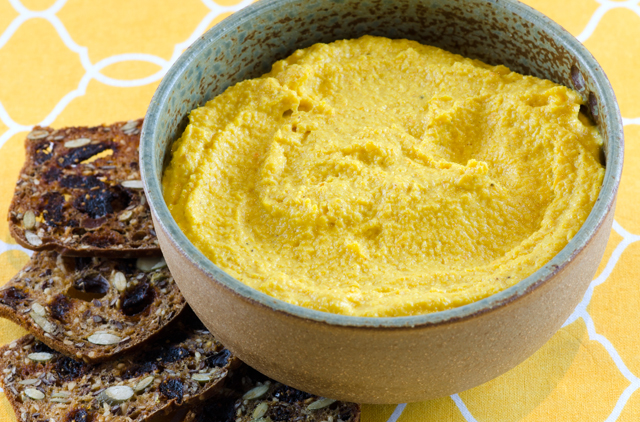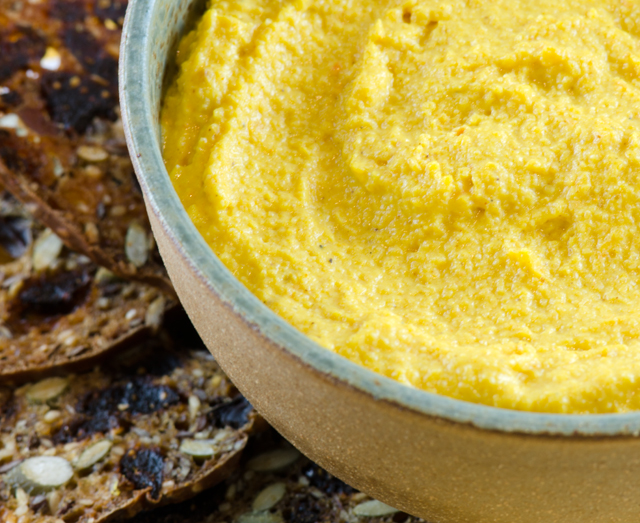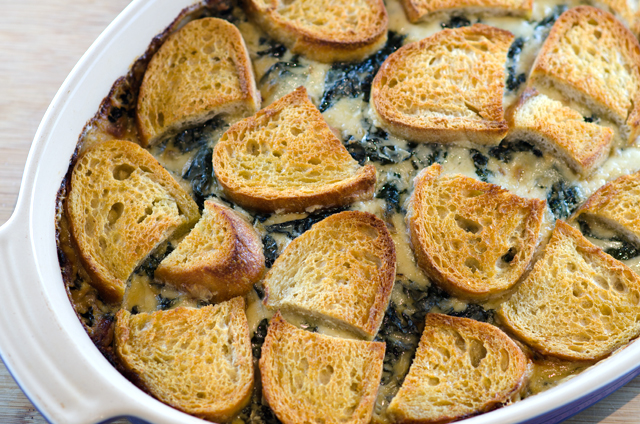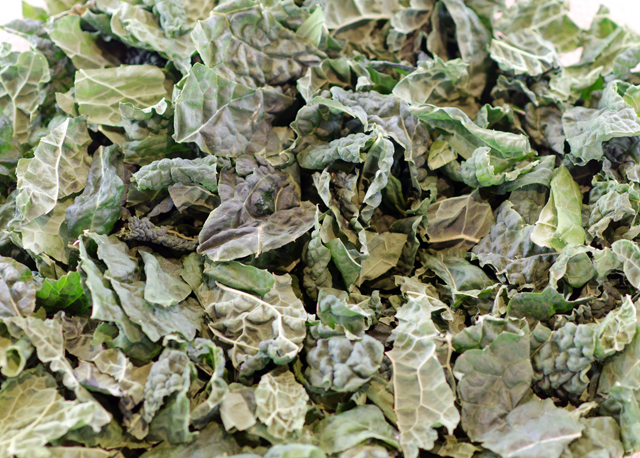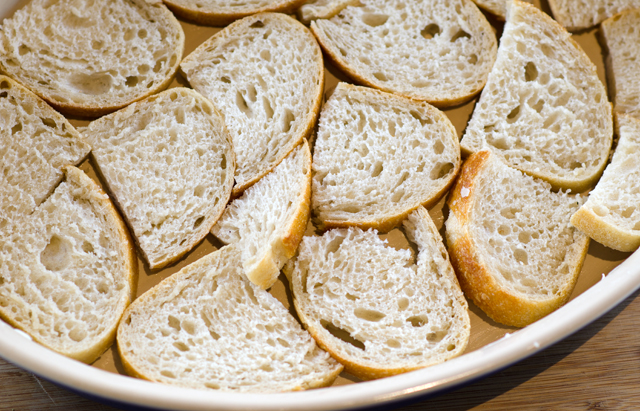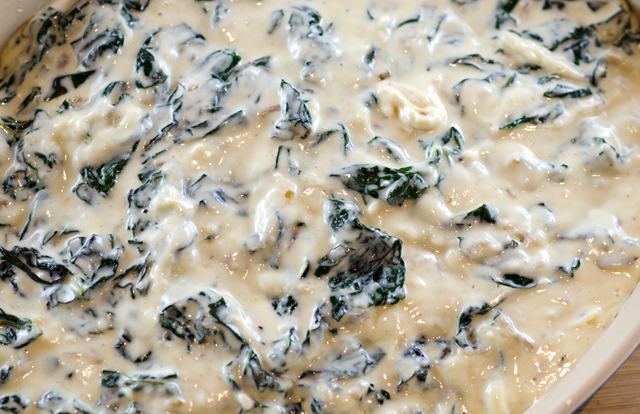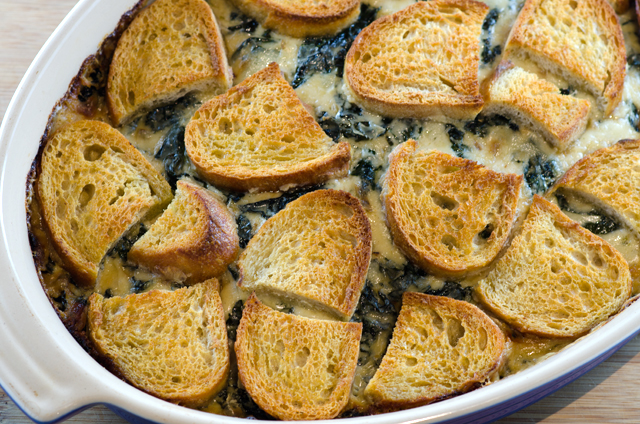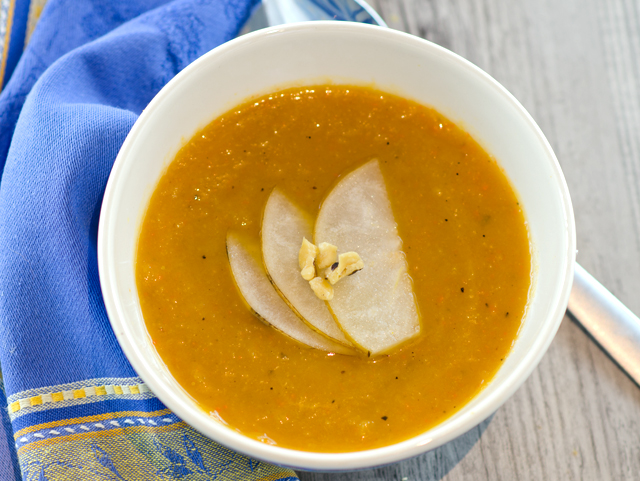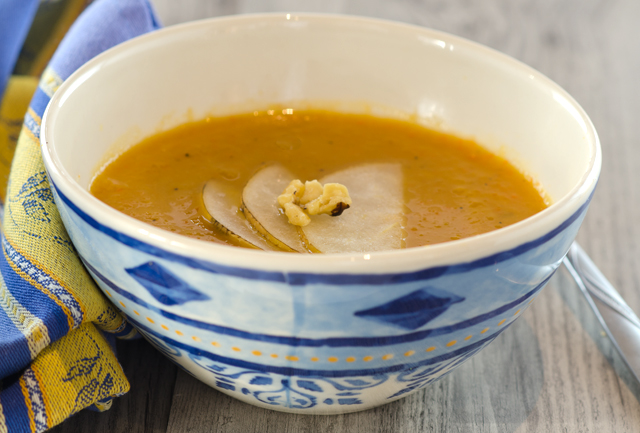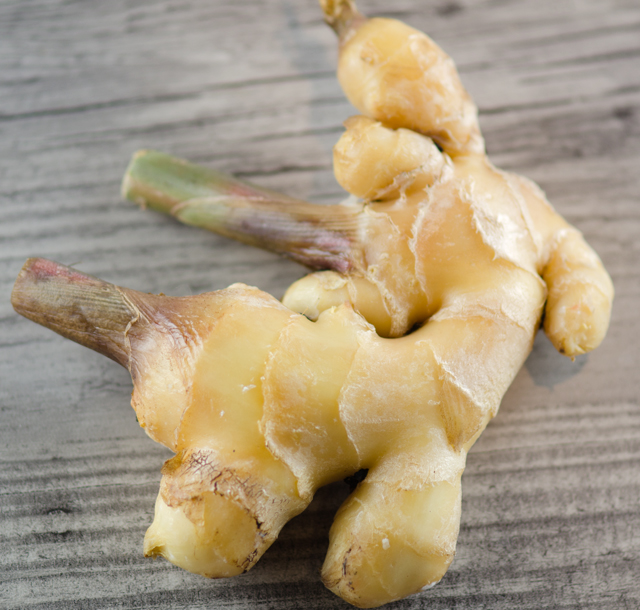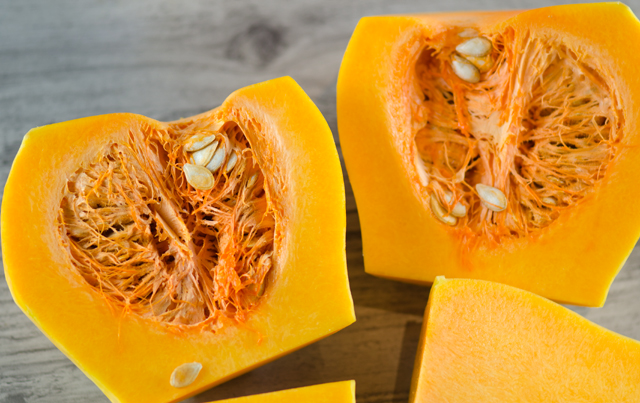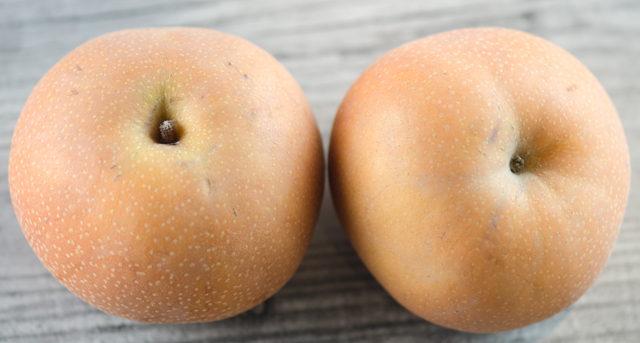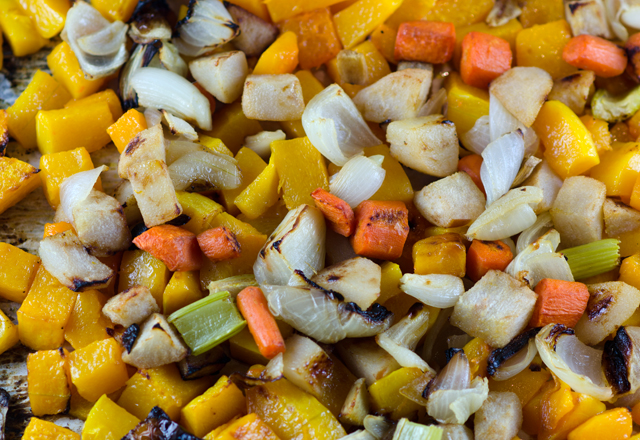A pile of several months worth of food magazines were accumulating so one afternoon I sat down with a stack and some sticky notes to mark the pages of the recipes that intrigued me. October’s Salad of the Month in Food and Wine demanded a second look, grilled fig salad with spiced cashews. This recipe was contributed by Ratha Chaupoly and Ben Daitz, chef-owners of the Cambodian sandwich shop, Num Pang with six locations in New York City.
The first step in making this recipe and one of the things that makes this salad quite different is cashew brittle. A good brittle should be hard, but not hard to make. They just require a bit of patience and your undivided attention. Combine sugar and a few tablespoons of water in a heavy bottomed pan over medium high heat and bring to a boil. Continue to boil over low heat undisturbed until you see a light amber caramel start to form. Immediately take the pan off the heat and whisk in butter and the ingredient that makes this brittle unique, five spice powder.
Five spice powder actually gets it name from the five elements in Chinese culture and can contain as many as ten different spices. Traditionally it is a blend of star anise, cloves, cassia or Chinese cinnamon, Szechuan peppercorns and fennel. Since it was banned in this country for many years, some premade blends swap out ginger or black pepper for Szechuan peppercorns. It adds a spicy fragrance and flavor to both sweet and savory recipes.
Since it is the middle of December I was not going to fire up the grill for the figs. A grill pan did the job quite nicely. Fresh figs this time of year come from California but nothing beats a fresh fig right off the tree. Joe is growing six varieties of fruit bearing fig trees. Our season for fresh figs is late summer through early fall. We keep a close eye on the ripening process. Too green and the figs are tasteless and watery. If left too long to ripen the figs burst open and all their sweet deliciousness becomes a treat for the bees. In our horticultural zone fig trees need to be protected in the winter. Last year’s harsh winter gave Joe concern that some of the trees might have died off. They didn’t and in addition he made new cuttings this spring to add to our tree collection.
The dressing for the salad combines traditional Chinese ingredients, rice wine vinegar, ginger, scallions and sesame oil. Be sure your sesame oil is toasted, not cold pressed, it has an amazing fragrance and a warm toasted flavor. Black sesame seeds are worth searching out, they have a richer flavor than their white counterparts. All this being said I found the dressing on it’s own to be a litttle lackluster so I added a quarter teaspoon both of oyster sauce and a spicy ginger syrup. To bring an element of salty crunch to the salad, I added some speck, a salted and cured ham that I browned in a pan.
The original recipe called for Bibb or oak leaf lettuce but I feel a mesclun mix that includes a more assertive green such as spinach or baby chard would make a better salad. I should mention too that the brittle is delicious on its own for snacking and it would be easy enough to swap out another nut or spice to make it different.
Grilled Fig Salad with Spiced Cashews
Serves 4
Adapted from Food and Wine Magazine October 2014
Ingredients
- 1/2c sugar
- 1/2T unsalted butter
- 1/4t Chinese five-spice powder
- 1 cup roasted unsalted cashews
- Kosher salt
- 1/4c canola oil plus more for brushing
- 2T toasted sesame oil
- 2T unseasoned rice wine vinegar
- 3T peeled and finely grated fresh ginger
- 1/4t ginger juice with honey
- 1/4t hoisin sauce
- 1/3c scallions, green parts only, finely chopped
- 1T toasted black sesame seeds
- 12 fresh figs, halved
- Freshly ground pepper
- 4c plus spring mix salad greens
Directions
- Line a baking sheet with parchment paper. In a medium saucepan, bring the sugar and 2 tablespoons of water to a boil. Boil over moderately low high, undisturbed, until a light amber caramel forms, about 5 minutes.
- Using a wet pastry brush, wash down any sugar crystals on the sides of the pan. Remove the pan from the heat and whisk in the butter and the five spice powder. Stir in the cashews until evenly coated. Scrape the cashews onto the prepared baking sheet and spread in an even layer; season with salt to taste and cool. Break the glazed cashews into individual pieces.
- In a small bowl, whisk 1/4c canola oil with the sesame oil, rice wine vinegar, ginger, ginger juice, oyster sauce, scallions and sesame seeds.
- Sauté several slices of prosciutto or speck until brown. Drain on paper towels and when cool, crumble for salad.
- Heat a grill pan over high heat and brush lightly with oil. Brush the cut sides of the figs with oil and season with salt and pepper. Grill over moderate heat just until lightly charred and barely juicy, about 2 minutes per side, transfer to a plate.
- In a large bowl, toss the lettuce with 2/3 dressing and season with salt and pepper. Arrange the lettuce on plates and top with the ham and figs. Drizzle more dressing over the figs, sprinkle with the candied cashews and serve.


